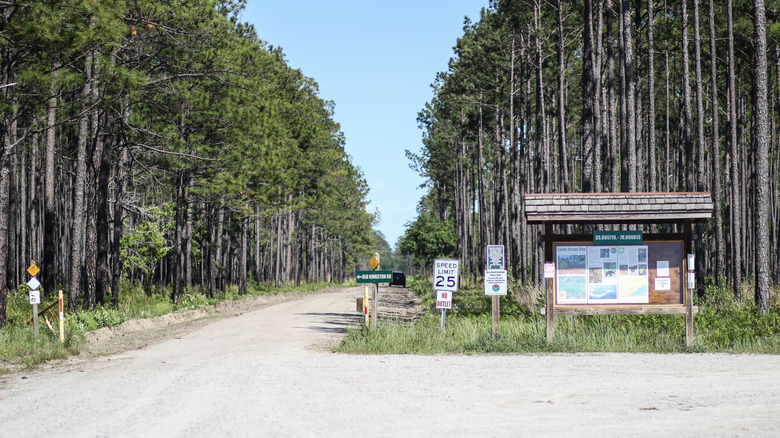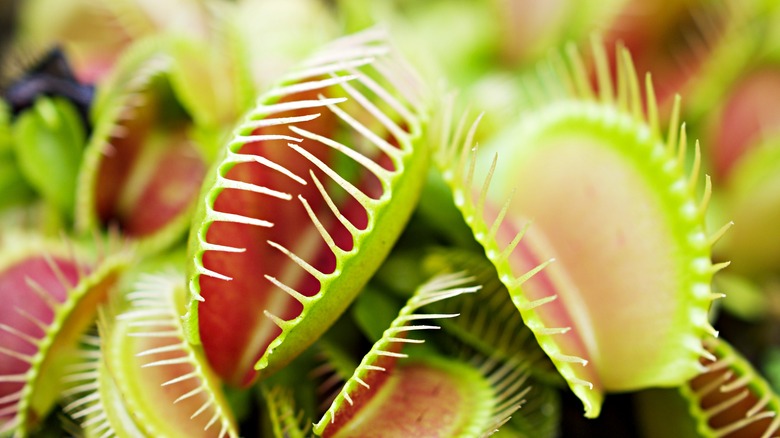A Diverse Nature Reserve On The East Coast Has A Massive Population Of Carnivorous Plants
Many of us go to nature preserves to walk in the great outdoors, hike along a trail, or spot wildlife. What you may not expect to find is a host of carnivorous plants. About 10 miles from South Carolina's Myrtle Beach (one of the most dangerous shark-infested beaches in the world), you'll find the Lewis Ocean Bay Heritage Preserve. This natural area has over 10,000 acres of land, a few paths to walk down, and some wonderfully serene scenery. However, it also has some unusual plants that eat insects and arachnids, including the Venus flytrap, which is native to North and South Carolina, as well as purple pitcher plants (or frogs' breeches), yellow trumpet pitcher plants, and dwarf sundews. This is the perfect place to spot them in their natural habitat.
While the rock musical "Little Shop of Horrors" features a singing Venus flytrap that grows to unusual size and has murderous plans for world domination, the real-life flora is a small plant with two green shell-shaped lobes and bristles along the edge. The little hairs (trichomes) trigger the lobes to close when brushed multiple times, so any insects climbing on the plants will be trapped and give the plant the nutrients it can't get from the soil.
Venus flytraps and the Lewis Ocean Bay Heritage Preserve
The Venus flytrap is perhaps the most well-known carnivorous plant, but they are a vulnerable species within the Lewis Ocean Bay Heritage Preserve. Major threats include being harvested for sale and losing their habitats to fire suppression and development. These plants eat creatures like spiders, grasshoppers, ants, and beetles, and if you look carefully, you might be able to see the insect victim inside (especially since it takes them three to five days to digest). If you do spot some, don't touch them. As the saying goes, take only pictures and leave only footprints while in the preserve.
Along with plants, the Lewis Ocean Bay Heritage Preserve is also home to a number of Carolina bays (freshwater circular depressions in the hills) and the endangered red-cockaded woodpecker. Birders may also spot northern flickers, turkey vultures, and red-winged blackbirds in the preserve. There are also black bears in the area, so keep that in mind as you go.
You can take a 4.1-mile out-and-back trail within the preserve, with a mere 36-foot elevation gain. However, you must wear blaze orange during hunting season. Also, there are no bathrooms or facilities in this remote area. It is also important to note that South Carolina has some dangerous driving conditions, so keep your wits about you while road-tripping through the state. If you'd rather steer clear of the carnivorous plants, the historic coastal city of Charleston has one of the world's most charming main streets.

